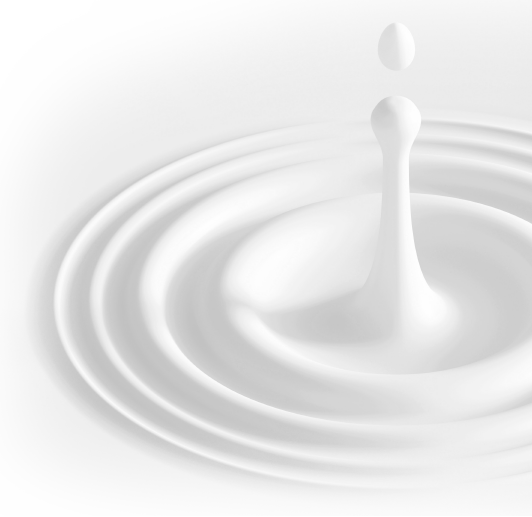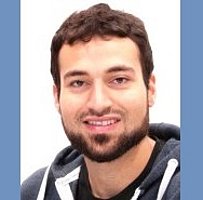When I was first thinking about where to go for the GSS internship, I considered whether I should join a group that was using helium nanodroplet infrared spectroscopy, the same technique that we use in Bochum to study aggregates of small organic molecules with water. The alternative would have been to get an insight into a different experimental technique. Finally, I decided to increase my expertise in the setup I already knew, and I opted for a stay at the University of Georgia (UGA), Athens, Georgia, USA; in the group of Gary Douberly, from April to June 2015.
During the preparation period, Gary proposed a project: solvating the tropyl radical in helium droplets and measuring the infrared spectrum of the CH stretch modes. He also told me about the International Symposium on Molecular Spectroscopy (ISMS), which would have took place in Urbana-Champaign, Illinois at the end of June. Since he would go there with his entire group, he suggested that I should join them to participate and present my data there. What a great opportunity! So the place and the timing for my stay abroad was fixed, yet, I didn’t know what to expect. I was full of excitement.
Sun, bikes, and a bro
I arrived in Athens at the end of March in beautiful warm weather – spring was already underway. The weather stayed pleasant for the whole time and I never needed warm clothing. It also meant that I could easily explore the area by bike. There are several parks like the State Botanical Garden that were worth visiting.
I already knew one of Gary’s graduate students – Chris – whom I had met a year before at the Gordon Research Conference on Atomic and Molecular Interactions at Stonehill College near Boston. When he heard that I was looking for a place to stay, he offered me his apartment, as he had a spare room and no room mate at that time. I immediately agreed, for I knew he was a bro.
Downtown music and university sports
Athens is a college town, with a population of about 100,000. It is located in a beautiful countryside about the Oconee River. The downtown area is dominated by bars with frequent live music events. The music scene is active around there, with some popular bands like R.E.M. and B-52. Many festivals take place, like the ‘Twilight Series’, an annually occurring series of bicycle races through downtown.
The UGA, funded in 1785, is the oldest public university in the US and ranks high in academics and research. From Chris’ apartment I could either take the bus that is circuiting campus or ride the bike to the campus.
In most of the colleges athletics is a big deal, and teams of different universities compete regularly. The Georgia Bulldogs – this is how the athletics teams at UGA are called – are successful overall. Especially their football team receives a lot of attention. Unfortunately, since the football season takes place in fall, I could only watch a practice game once. The UGA has a center for recreational sports, the Ramsey Student Center. It is a huge building with two gyms, two swimming pools, an indoor track, training halls for many sports and a number of multi-purpose halls, even walls for climbing. The Ramsey membership for 3 months was only 40$ for students, and I was able to use all of the facilities.
Time to measure cold radicals
Gary’s research group consisted of one postdoc and four graduate students at that time. They were using a helium droplet machine that had been running well for years already. But they were also setting up a new machine, that is able to produce large helium droplets, opening possibilities for a lot of new experiments. While the assembly was already moving towards completion, a lot of things still needed to be taken care of. Essentially only three persons including me were working with the running setup measuring radicals, a circumstance that gave me a lot of opportunities to perform experiments.
While their experimental setup is almost identical to the one I use at RUB, Gary’s lab focuses on small organic radicals, their reactions and complexes with other molecules. In Bochum on the other hand, we mainly conduct measurements on complexes of small organic molecules with a few water molecules, focusing on the microscale solvation processes.
In the first weeks we measured the hydroxy radical and some of its bimolecular complexes. Upon incorporating a brand new, homebuilt permanent magnet, we could observe the Zeeman splitting of the radical. In the process I got to know the helium cluster machine and the specifics of their setup. Finally, the bitropyl that I needed as a precursor for producing the tropyl radical, was delivered. By that time I was able to operate the machine and conduct the measurements on my own.
Science Zone
Helium droplets are used as a matrix for isolating and stabilizing small organic radicals, that are then probed by an infrared laser. Upon exciting a ro-vibrational transition the absorbed photon energy is quickly transferred to the helium, leading to evaporation of helium atoms and a decrease in the size of the droplets. This change is recorded as a depletion spectrum in a mass spectrometer.
The roller derby
Gary’s group met up in the evenings several times during my stay, hanging out at bars in downtown, relaxing and drinking.
Once, we went to Atlanta to watch a baseball game, where the Atlanta Braves beat the Cincinnati Reds. Another time, we went to watch a football practice game of the Dawgs. Also, Chris introduced me to some of his friends and we met a couple of times, brewing beer, playing frisbee, having barbecue, playing the Settlers of Catan board game or hanging out downtown after work and on weekends.
I even got to know a sport I hadn’t been aware of before: the roller derby. It is a game where two teams of girls on roller skates go around a track and one member of each team – the jammer – tries to overtake members of the opposing team and the rest of the team tries to hinder the enemy jammer. It is a dynamic game and surprisingly fun to watch.
The ISMS conference and a trip into the mountains
Finally, end of June came, it was time to attend the ISMS conference at Urbana-Champaign. Together with some colleagues of Gary’s lab we rented a university car and hit the road going north, direction Chicago. It was a 10h road trip to the conference site. . Nevertheless, the long drive was worth it, since the meeting had many interesting talks.
Several sessions on different topics took place simultaneously all the time, with mostly short talks on specific topics. There was a separate room, where you could get coffee and donuts all day – a habit that can become really unhealthy! However, there was a bowl of fruit, too, which got empty more frequently towards the end of the conference.
I spent the last weekend of my stay in the mountain area where North Carolina borders Georgia and Tennessee, enjoying the countryside, relaxing and racing a quad bike on mountain trails. And suddenly, I was on my flight back to Germany! Looking back, the three months were over in a blink. I had learned a lot and gained some insight into a part of this huge country and its culture. All people I got to know were open and friendly, and everybody took care that I got the full American Experience.
Even though I was working on essentially the same experimental setup I am using at home, I experienced working in a different environment and a different lab as a new approach to research. I also learned a lot more about the helium droplet technique, by getting to know different ways to deal with experimental challenges. I am grateful that I got this opportunity and I want to thank Gary for making my stay possible in the first place and Chris, who made sure that it was always great.
————————————————————————————————————————————
About the author






